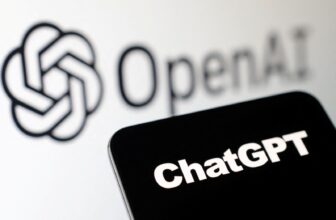Each actually sensible machine must understand its environment, however right now’s AI methods usually depend on power-hungry {hardware} and fixed cloud connections. That strategy creates a spot between what’s technically attainable and what’s sensible for robots, autonomous autos, and different units on the fringe of the Web of Issues (IoT).
Underneath the banner of “Bodily AI,” builders are pushing intelligence out of knowledge facilities and into sensors, cameras, and tiny modules—so machines could make split-second selections with out sending each body again to the cloud. Conventional cloud-based inference can introduce latency, unpredictable prices, and privateness issues, driving the shift towards on-device AI or Edge AI.
On the coronary heart of this shift lies inference: the section of deep studying the place a skilled mannequin takes new inputs—photos, video streams, sensor readings—and delivers real-time predictions. Not like coaching, which calls for huge knowledge units and heavy computation, inference is a streamlined “ahead go” that should occur quick and sometimes with minimal energy.
Edge inference permits a supply drone to detect obstacles on the fly, a manufacturing facility digital camera to identify defects immediately, or a subway security system to set off alerts in milliseconds, with out ready on round-trip community delays (latency).
NeoVision, referred to as the “Mind of Issues” by Neowise, is designed to bridge this hole. Moderately than adapting generic basis fashions, Neowise develops its personal inference engines from the bottom up. By tailoring every neural community and software program stack, NeoVision squeezes most efficiency into tiny footprints. The purpose is obvious: run refined imaginative and prescient duties on minimal {hardware} in order that even battery-powered units can function and huge fleets of vision-capable methods may be deployed with out onerous infrastructure prices.
To attain its power-saving ambitions, NeoVision faucets two frontier applied sciences. First, Silicon Photonics guarantees as much as 100× larger vitality effectivity than standard silicon chips by transmitting knowledge as gentle, not electrons. Second, Quantum Computing strategies intention to speed up key operations at fractions of right now’s energy budgets.
Though each fields are nonetheless maturing, Neowise believes this twin-track funding will in the end slash inference-chip energy consumption by roughly 35× in comparison with GPU-style {hardware}—and drive whole system prices down by almost two-thirds versus legacy options.
Till just lately, methods leaned on GPUs tethered to cloud servers for heavy lifting. Firms struggled with 200-watt modules and 350-watt server racks—or confronted the trade-off of lower-precision fashions that missed delicate defects or hazards. As we speak’s interim fixes embody hybrid architectures that break up workloads between the sting and knowledge heart, however they nonetheless add complexity and value.
Against this, NeoVision’s all-in-one chip-and-software answer retains each inference and occasional mannequin updates on the system itself, slicing latency to microseconds and eliminating recurring cloud charges.
Neowise, based on April 12, 2024 is led by Charlie Shin (CEO) alongside co-founders Ned Jo (CTO) and Rocky Son (COO). From its early years, the startup has racked up milestones—an MVP of energetic studying by November 2024, a cloud-NPU pilot by December, and partnerships for subway security options in mid-2025. Its workforce combines deep experience in AI, photonics, and robotics, backed by a rising patent portfolio and strategic agreements with sensor producers and system integrators.

Neowise CEO Charlie Shin (proper), Ubergizmo Co-founder Hubert Nguyen (left) | Picture by AVING Information
NeoVision’s industrial technique rests on 4 pillars. First, Neowise will license its proprietary knowledge units and foundational algorithms. Second, it presents crucial features—object detection, hazard warning, SLAM—via APIs or software program subscriptions. Third, it’s creating its personal NPU chips, cloud platform, and common SDK for seamless deployment.
Lastly, it plans to allow NPU-driven digital camera and robotic imaginative and prescient options so companions can construct customized edge-AI methods with out reinventing the stack. The imaginative and prescient is daring, however as right now’s Bodily AI wave accelerates, NeoVision goals to turn into the go-to “mind” for any system that should see and determine on the velocity of sunshine.
Filed in . Learn extra about AI (Artificial Intelligence), GPU (Graphics Processing Unit), Korea, Semiconductors and Startups.
Trending Merchandise

Wi-fi Keyboard and Mouse Combo, 2.4G Silent Cordle...

Wireless Keyboard and Mouse Combo, EDJO 2.4G Full-...

ASUS RT-AX1800S Dual Band WiFi 6 Extendable Router...

TopMate Wi-fi Keyboard and Mouse Extremely Slim Co...

ASUS RT-AX88U PRO AX6000 Dual Band WiFi 6 Router, ...










